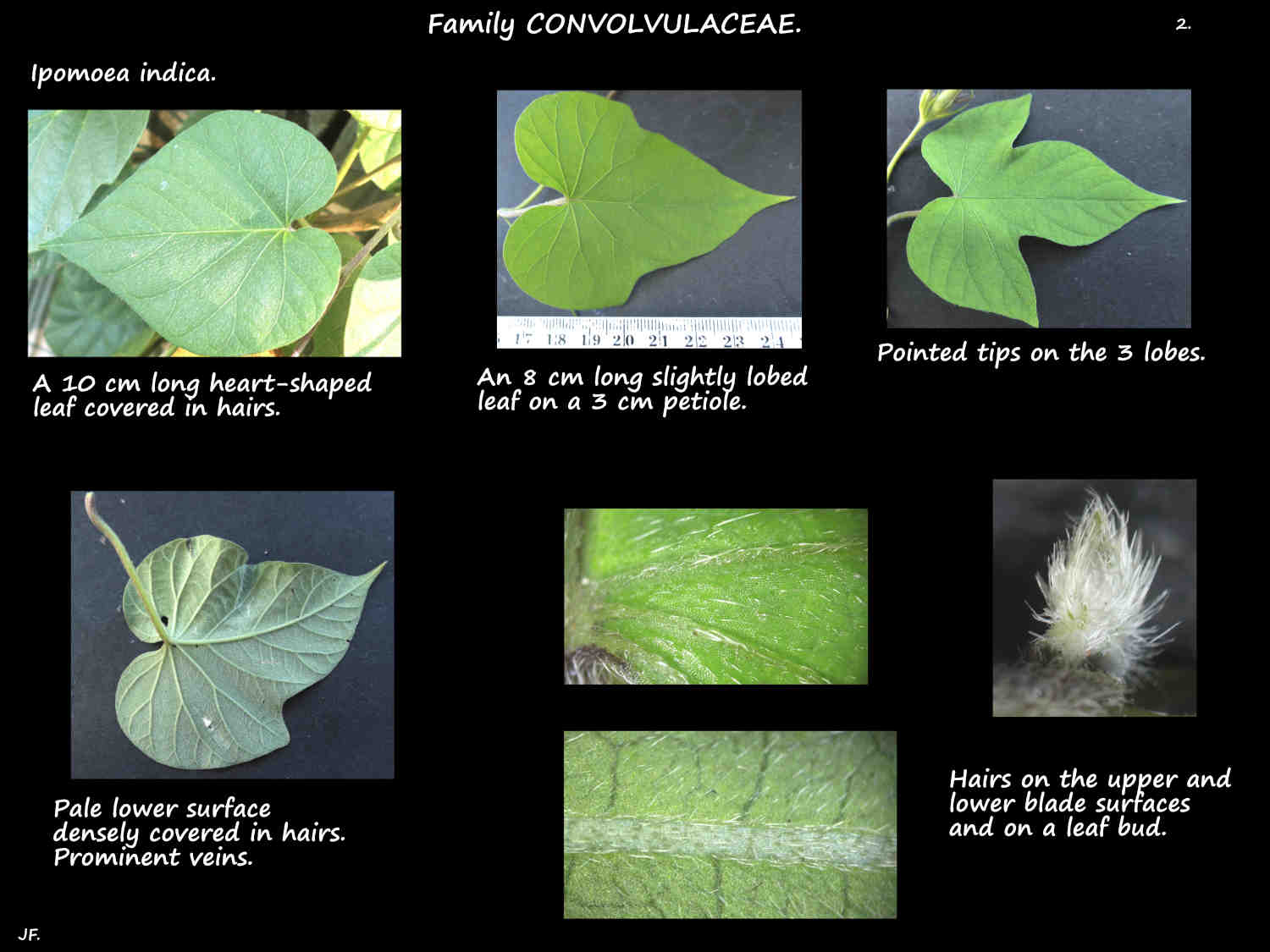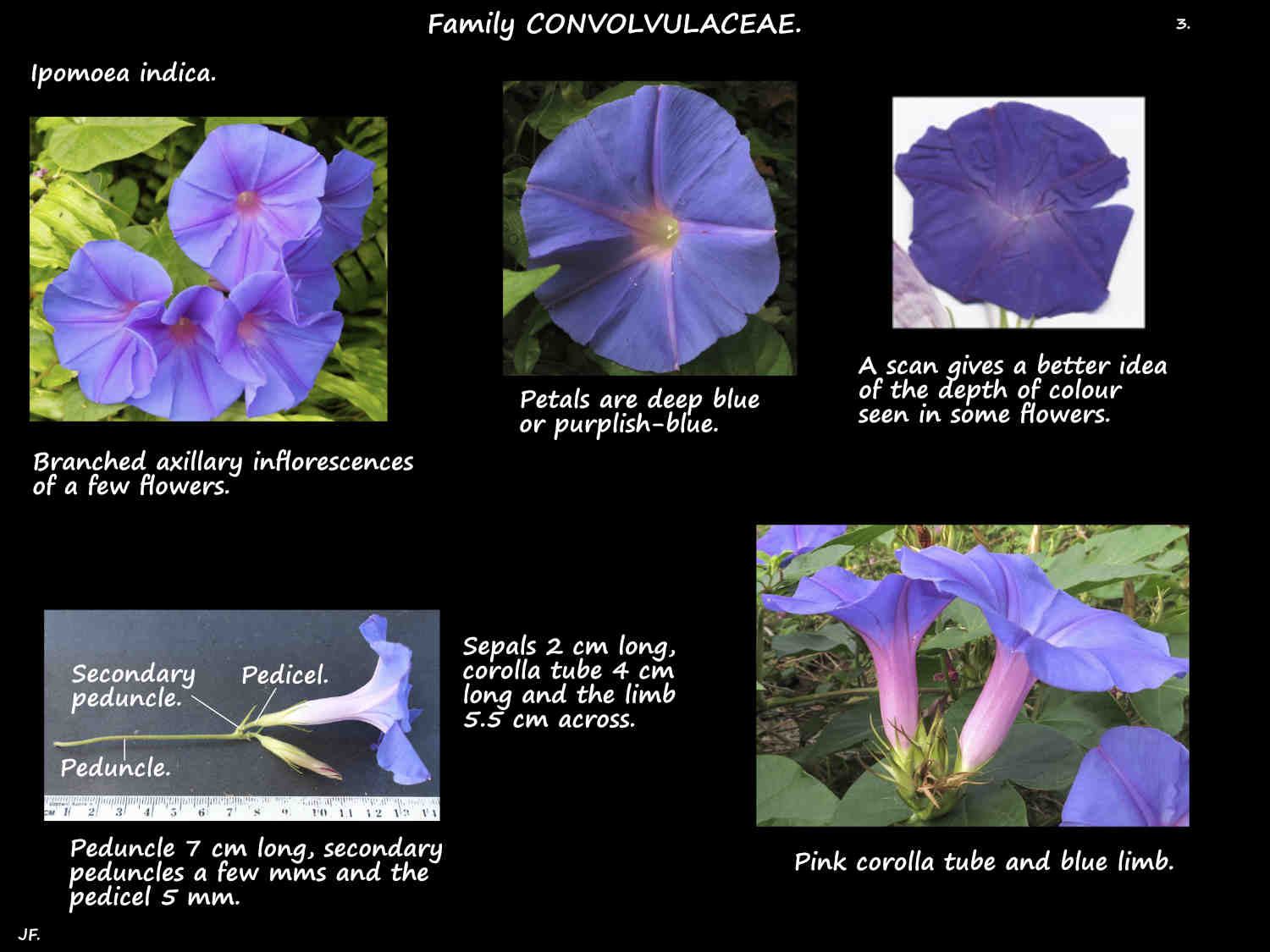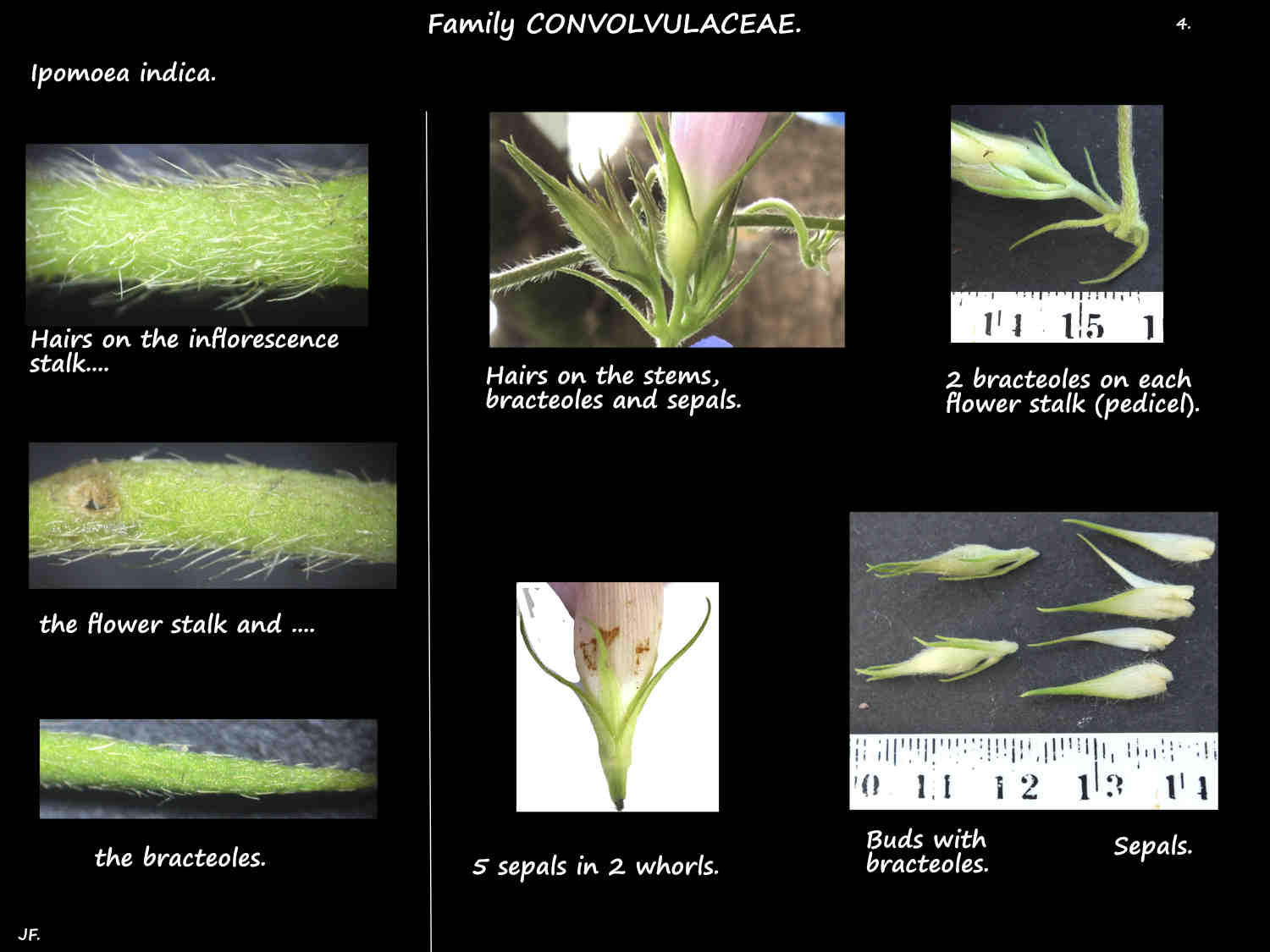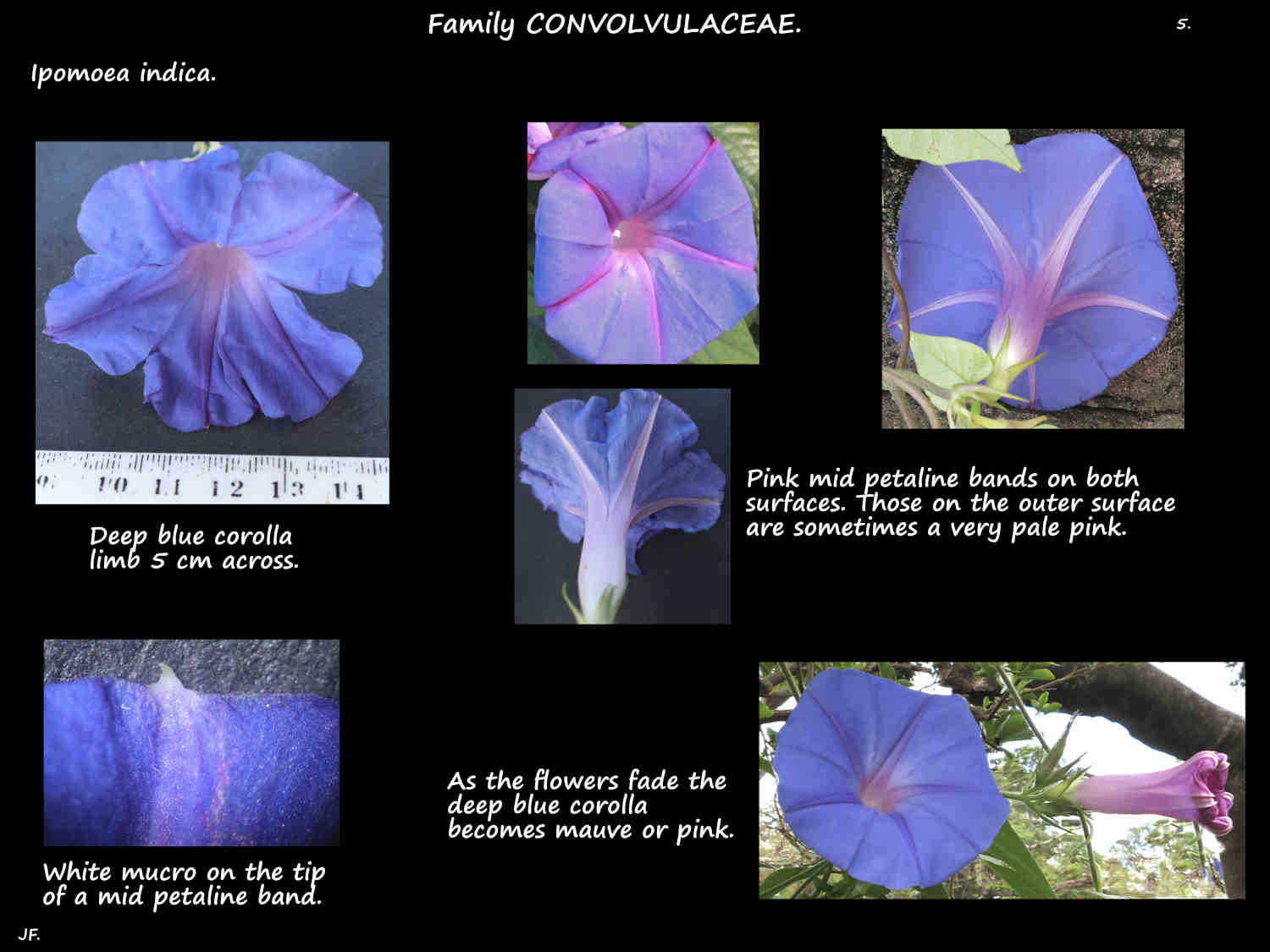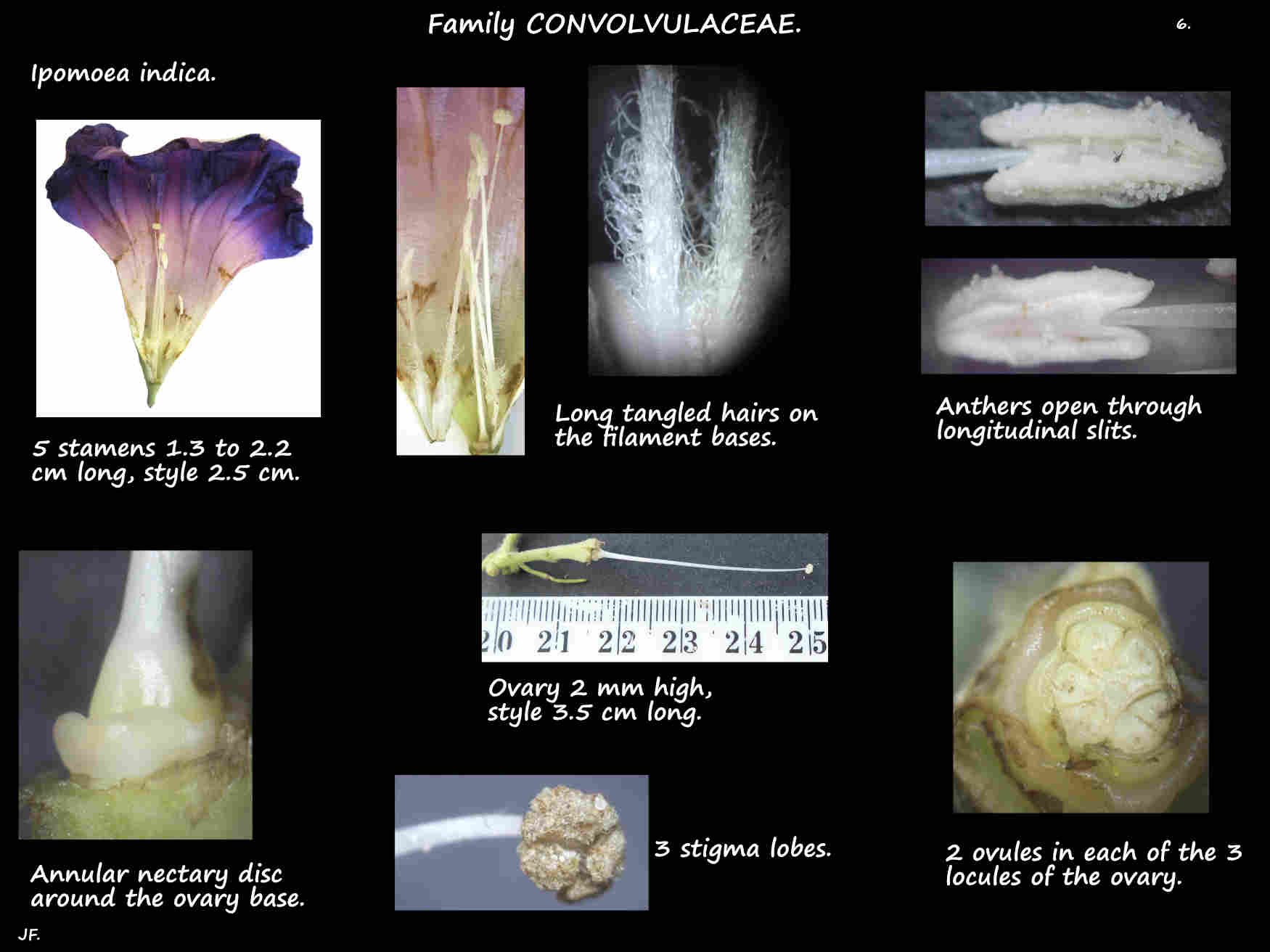Ipomoea indica.
Also seen as Convolvulus indicus it is commonly know as the Blue (or Purple) Morning Glory.
Naturalised in eastern Queensland they are an environmental weed.
They are most often seen as a twining climber with stems up to 15 m long.
With no support they will creep along the ground, rooting at the nodes or scramble over other plants or structures.
Young stems have a lot of hairs that spread out or lie flat along the surface.
The alternately arranged leaves are on petioles 2 to 7 cm long.
The heart-shaped or 3-lobed blades are up to around 16 cm long and 5 cm wide.
The short lobes have a pointed tip with a small mucro (a short abrupt point).
Both types of leaves can be seen on the same plant.
There are fairly dense soft hairs on the lower surface and fewer on the upper.
Axillary inflorescences are branched clusters of up to 12 flowers on a stalk or peduncle up to 10 cm long.
The secondary peduncles are only a few mms long.
Each flower is on a petiole with a pair of narrow hairy bracteoles around 1 cm long.
The bracteoles may persist or fall off.
The 5 free, often unequal green sepals are around 20 mm long and 5 mm wide.
They are ovate to narrowly ovate with soft hairs.
The funnel-shaped corolla of 5 fused petals has a tube 8 to 10 cm long and a spreading limb around 7 cm wide.
The edge of the limb is smooth with no lobes and there are 5 mid petaline bands.
The deep blue or bluish-purple corolla becomes pink or red as it dries.
The mid petaline bands are pink and the centre is pink or pale pink.
If there are any hairs they are only a few at the end of the mid petaline bands.
The 5 stamens are inserted 1 cm above the base of the corolla tube.
On filaments of slightly unequal lengths they do not extend past the top of the tube.
There is a clump of white hairs near the base of the filaments.
The superior ovary has 3 locules and a style with a 3-lobed stigma lying in the throat.
The fruit are said to be capsules with 4 to 6 dark seeds with tiny hairs.
(Mabberley divides the Convolvulaceae family into 12 subfamilies including the very similar Ipomoeeae
and Convovuleae. They both have pinnate veins and one style but Ipomoea have pollen with
tiny spikes while Convolvulus have smooth spherical pollen.)
J.F.


